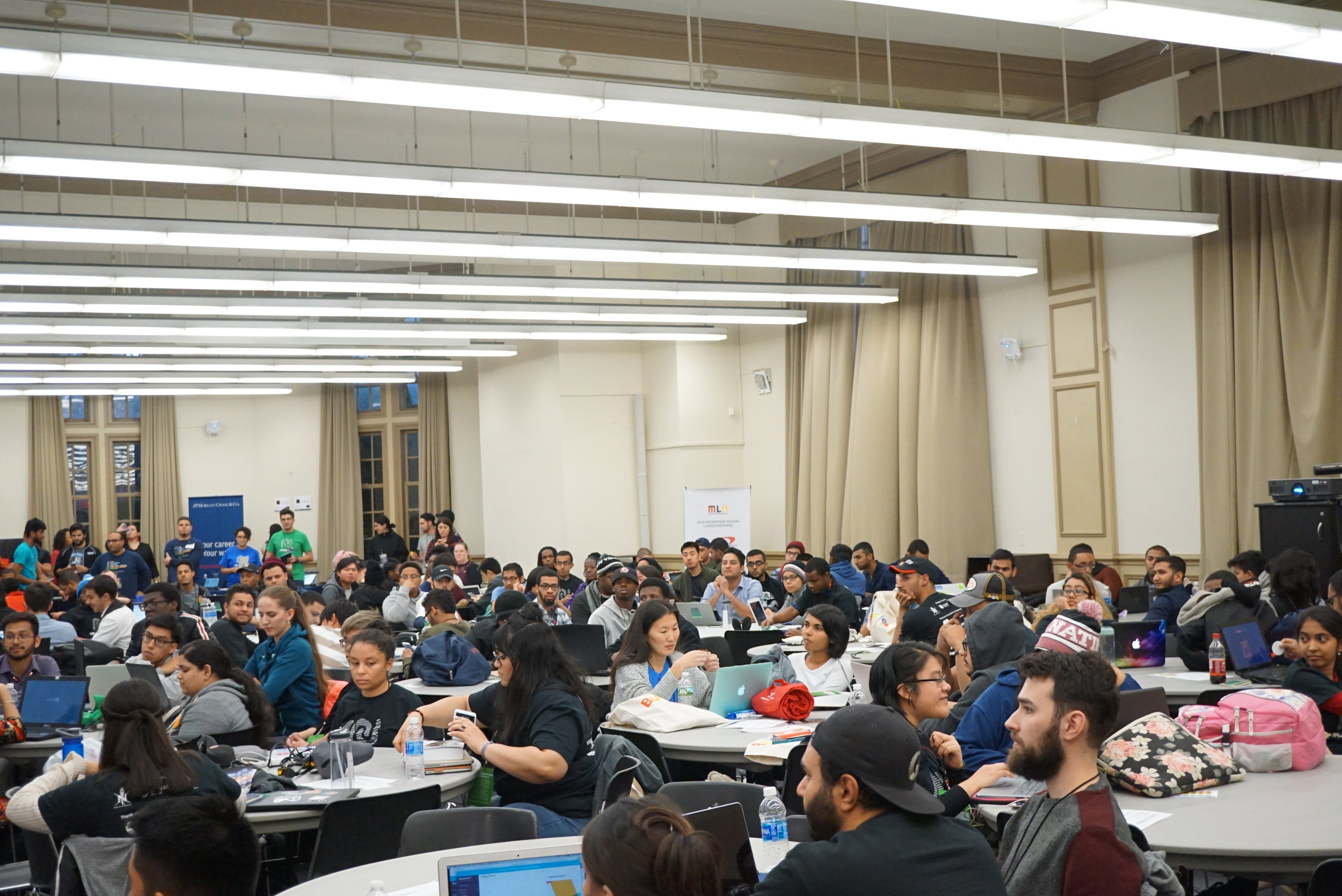For Lehman Students, Plastic Is the New Christmas Green
By Leah Liceaga
A Christmas tree lot ready for the holiday season. Photo courtesy of PublicDomainPictures.net.
“To me you’re taking away from nature every time you cut down one of those trees just to have it in your home, or anywhere else,” Christine Auiles, a Lehman English major, explained of her choice to get an artificial tree for Christmas. “They last longer, it’s more durable, [and] you can put it away until you need it.” She added that she does not feel it is necessary to have a live tree at home for Christmas when it will only last a couple of days.
For many Lehman students, like Auiles this holiday season, going for plastic was the greener and more affordable choice. According to Diffen, a website that makes comparison that people worldwide can add to and update, the price of a mid-sized artificial tree can average $100, while a real tree of the same size costs $40 to $50. A fake tree is ultimately better in the long run. The artificial tree will also last up to ten years and require less care than a real tree, which would have to be replaced every year.
Home Depot charges anywhere from $70 to over $200 for an artificial tree, depending on size and appearance -- for example, a tree covered in fake snow or already outfitted with Christmas lights would cost more than a simple artificial tree. While the real trees Home Depot sells are cheaper in the short term, over a period of years, buying multiple real trees becomes costlier than buying one artificial one.
“We got a fake tree,” Sandra Matos, a Lehman English major said of her Christmas tree choice this year. “The prices were better, and we needed one quickly.”
For other students, the issue was not price but durability. Lehman College junior, Laura Leonardo, said her family “used to get real [trees] when I was younger, but my family started getting fake ones when I got older because we got too busy to really care about Christmas like that…a fake tree, and reusing it seemed more practical.”
Buying a plastic tree gets around another problem that has increased in recent years -- a shortage of trees. Due to the recession in 2008, many people who grew Christmas trees either went out of business or had to decrease how many they grew. Since trees take a decade or so to grow, there was a shortage of Christmas trees this year.
“There is a touch of an undersupply," Doug Hundley, spokesman for the National Christmas Tree Association told Newsweek. Drought in the Pacific Northwest also shares blame for the shortage. GWD Forestry -- a company that offers direct investment into sustainably managed agroforestry plantations internationally -- predicted the recent droughts and wildfires in North Carolina and Oregon could keep the tree shortage going until the year 2025. It also noted that the amount of Christmas trees being planted across the country has dropped dramatically; falling from 5.6 million in 2010 to 3.7 million in 2015.
Once the holiday season is over, real Christmas trees are usually thrown out, though some are recycled. From Jan. 2 through 13 of 2018, the New York City Department of Sanitation (DSNY) collected real Christmas trees left at the curb and turned them into mulch to be used for the city’s parks, community gardens, and institutions. They also encouraged those with gardens to use as much of the tree as possible for mulch. The remainder of the tree could be taken to MulchFest at city parks to be chipped, or left for the DSNY to collect.
Marvel’s ‘The Punisher’ Aims High but Falters on Gun Control
By Jorel Lonesome
Logo of Marvel’s “The Punisher.” Photo courtesy of Wikipedia.
The Las Vegas Shooting on the night of Oct. 1, 2017 left the upcoming Netflix series “The Punisher” at the center of much controversy. Following the shooting, which left 58 dead and at least 527 wounded, Netflix and Marvel canceled the preview panel for the upcoming series at New York Comic Con and delayed the release of the show until a month later.
The show as it was finally released wants to be more than just another absurd action fantasy. What distinguishes it from other gun-saturated franchises is that it aims to be grounded in real-world 21st century American issues, and whether vigilante justice is ever justified. Though it attempts to critique the consequences of vigilante justice, and tries to include a debate about gun control, it does not provide the right conversation about central issues in the current national conversation. While the writers attempt to address gun violence in America, they fail to capitalize on the issue, and the series largely fails at questioning the violence portrayed in some of its episodes. Despite this weakness, however, “The Punisher” is an excellent addition to the Marvel Cinematic Universe, sharing continuity with the films and other television series of the franchise.
Its weakness on gun control is evident in episode 9, “Front Toward Enemy,” which tries to introduce a debate about Americans’ right to bear arms, but ultimately lacks the credibility to make the overall message meaningful. The plot has the character Lewis Wilson (Daniel Webber), a young veteran who has difficulty readjusting to civilian society, eventually resort to terrorist actions, planting some bombs throughout the city as part of his pro-gun, anti-government agenda. Following this is a debate on character Ricky Langtry’s (Dov Davidoff) radio talk show between Karen Page (Deborah Ann Woll) and pro-gun-control Senator Stan Ori (Rick Holmes.) This debate is the weakest part of this episode. Senator Ori wants more gun-control laws, a stance that Karen, who carries a gun for protection, opposes. Rather than let the characters have a genuine debate about aspects of the issue, the show reduces Karen and Ori’s positions to a basic pro- vs. anti-gun debate.
The problem with this framing is that their debate isn’t the argument people are having in the real world. Politicians aren’t asking to abolish the Second Amendment. They want to close loopholes in background checks to prevent troubled people from purchasing weapons. They’re also asking for practical gun laws such as banning semiautomatic weapons and attachments such as the bump stocks that allowed the Las Vegas shooter to fire 90 shots in ten seconds.
The series tries to be cleverly ironic when Ori stresses he’s totally against guns, but hires Anvil, a governmental security company of armed guards, to carry guns protect him from retaliation by Lewis. Still, disarming trained security guards isn’t what the actual gun debate is about in America. The thought of mainstream politicians trying to take away everyone’s guns is illegal, given how often that conspiracy theory is used as a topic in anti-gun-control propaganda. “The Punisher” doesn’t need to address the issue of gun ownership. Ultimately, it only adds social commentary without tackling the actual debate.
Similarly, the series fails to resolve its depiction of Frank Castle (Jon Bernthal) and his crusade of vigilante justice with any significant challenges to his violent worldview. Supporting characters, Micro (Ebon Moss-Bachrach) and Curtis Hoyle (Jason R. Moore) encourage Frank’s vigilantism. Likewise, despite her loyalty to the law, Homeland Security Agent Dinah Madani’s (Amber Rose Revah) shows sympathy for Frank after he saves her from a car accident, though she remains suspicious that Frank is not that different from Lewis. Meanwhile, Karen supports Frank’s habits. “We must not tolerate those who use violence to communicate,” Karen writes in her featured article about Lewis, but this very critique of violence being used to solve problems isn’t a message that Frank seems to understand.
Aside from the gun control issues, however, “The Punisher” series triumphs and remains strong. Frank is an unstoppable force, and when it comes to the people he cares about, he will give up his sole mission in an instant. If you want to see intense action and drama, this is one of the best shows on Netflix to watch.
What Tops at Anime NYC
By Juan Vasquez
The first annual Anime convention hit New York City last Nov. 17-19. Held at the Jacob K. Javits Convention Center, it featured some eye-opening participants who collectively made for a jubilant overall success. Here is what topped out at Anime NYC.
The Cosplayers
It is never a convention without cosplayers! Many of them went all out, even when compared to the extravagant works seen at New York Comic Con. Despite Anime NYC being an anime-oriented con, many of the cosplayers came from all four corners of the pop culture world.

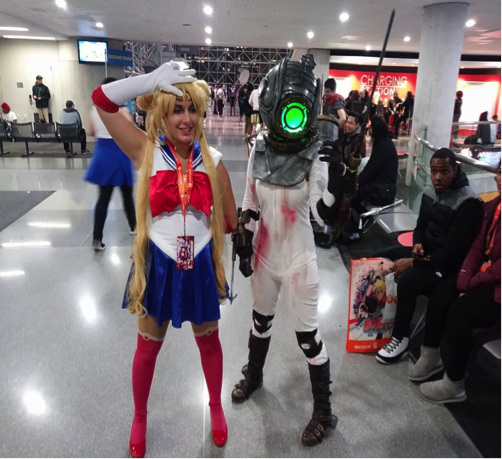


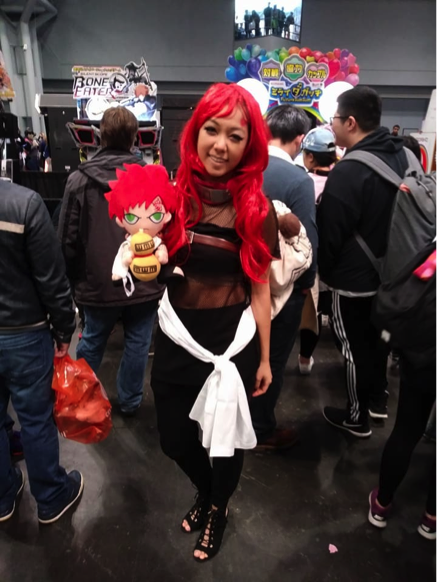


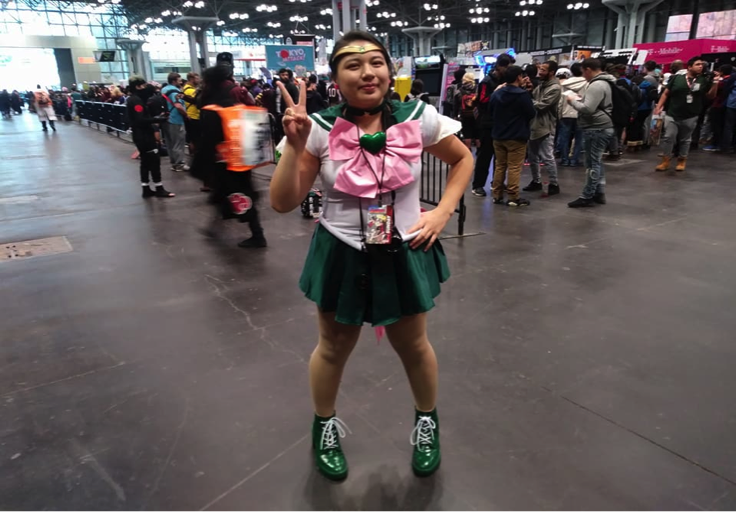
The Vendors
Anime NYC had a few dozen vendors, each of them offering unique items of interest to the con-goers.



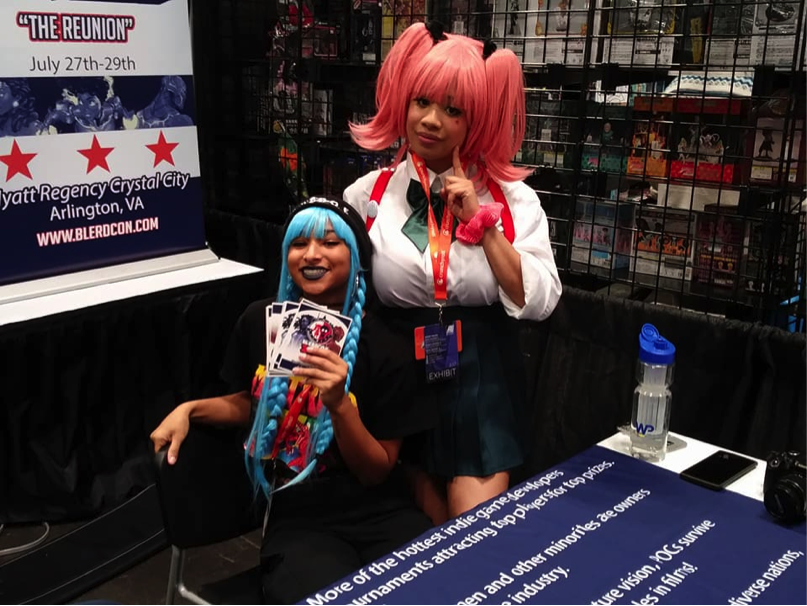
The Creators
Conventions like Anime NYC give a voice to up-and-coming content creators. Many of the artists at Anime NYC were largely indie artists and manga (Japanese, or in this case, Japanese-style comic).
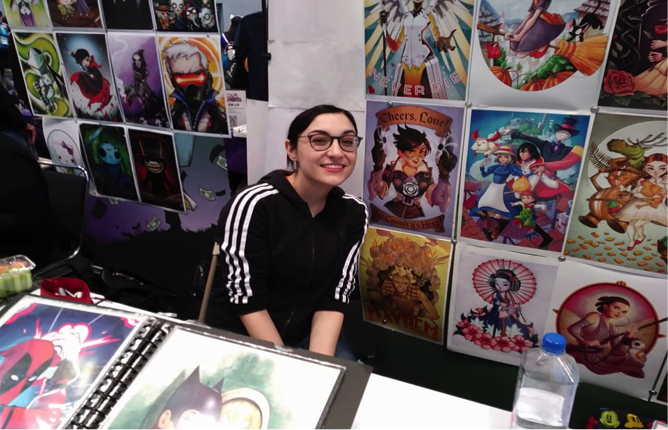

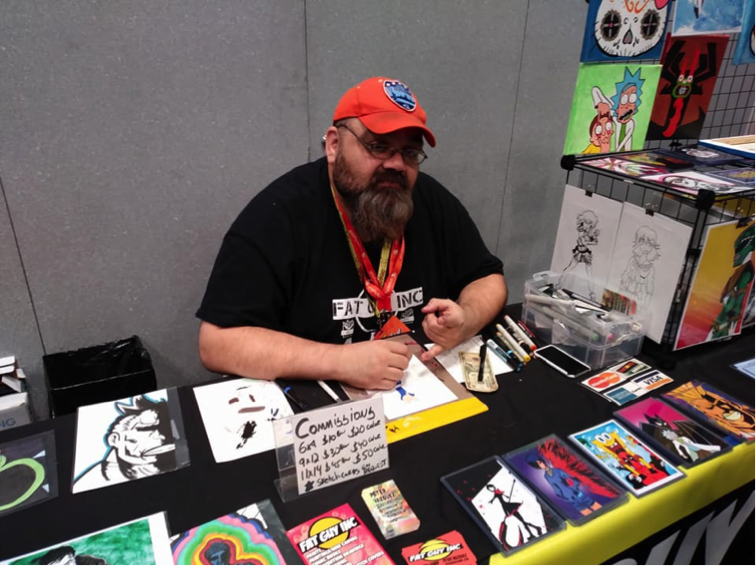
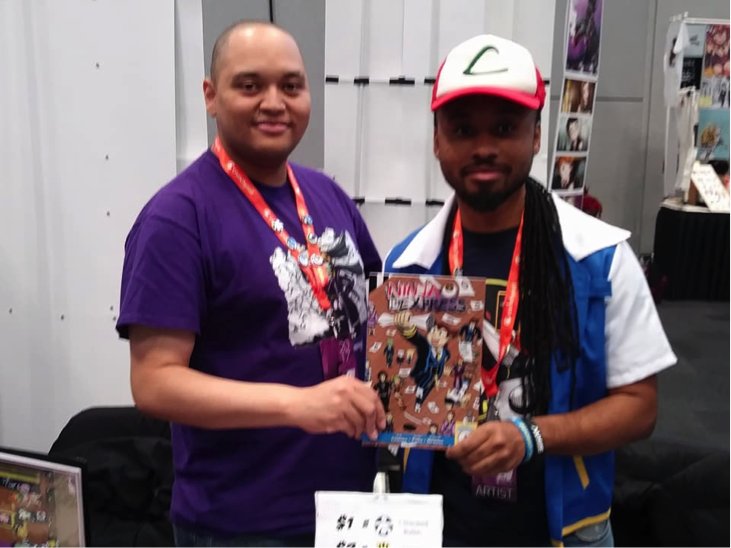
New Tax Laws Will Hit Lehman Students Hard
By Thomas Behnke
The proposed tax bill would take away interest deduction on all student loans. Photo courtesy of Wikimedia Commons.
“It’s not fair,” Erica Mejia, a Lehman senior, said. “My family made just too much [for me] to qualify for aid, so it’s all on me. It’s bad enough we have to go into debt to get an education. Now even the little breaks are being taken away.”
Mejia was lamenting the passage of the Trump administration’s wildly unpopular tax plan, passed by the Republican Senate in the early hours of the morning on Dec. 2. Experts say the bill will make students’ lives harder and their pockets emptier. While it raises taxes for the middle- and lower-classes, it gives substantial breaks to large corporations and the wealthiest in the nation. The Congressional Budget Office (CBO) estimates it will add over a trillion dollars to the deficit.
Particularly hard on students are provisions within the bill that eliminate any deductions on student loan interest. According to The Institute for College Access and Success (TICAS), “Seven in 10 seniors (69%) who graduated from public and nonprofit colleges in 2014 had student loan debt, with an average of $28,950 per borrower.” The site lists New York student debt as slightly below the national average ($27,842). The Department of Education’s Federal Student Loan page lists interest on federal loans ranging from four to seven percent. Interest paid over the life of a loan -- typically 10 years -- can be from $4000 to over $11,000.
A Quinnipiac poll reports nationwide approval of the tax plan at just 29 percent. Lehman students voiced their disapproval of it as well.
“How are we supposed to pay these loans when they are raising our taxes, and eliminating deductions?” Meija said. “I’m going to have a degree, but I’m not making a hundred grand out of the gate.”
“I don’t think this administration is interested in public education at all,” Jose Areas, a Lehman sophomore, said. “They aren’t interested in people who aren’t like them, who don’t have the means.” Areas’ brother is currently paying off over $45,000 in loans and is working as a commercial mover. “He worked full-time and went to school, too. He got his degree and, really what he should be doing is internships, but three months after he graduated, bang, there’s a bill in the mail. He can’t afford not to get paid.”
Citizens protest GOP tax bill. Photo courtesy of Wikimedia Commons.
Forbes Magazine reported CBO statistics for the tax bill. By 2019, people earning less than $30,000 will be paying almost $10,000 more toward the budget deficit in either increased taxes or decreased services. The bill has provisions in it to end mandatory health insurance requirements, which the CBO reports will ultimately cause insurance premiums to skyrocket.
Gabriel Garcia, a junior at Lehman put it succinctly, “I’m graduating in 2019. Last election was the first one I could vote in. I didn’t have a say in the mismanagement of the government’s money. I didn’t give millions of dollars to corporations who ran to the Bahamas with their profits. I know I have to pay back my loans, but how am I responsible for the rest of the government’s debts?”
Bronx Success Story Ends in Tragedy
By Zoe Fanzo
Lowell Hawthorne, Golden Krust founder and CEO. Photo courtesy of Facebook.
“He was the quintessential Lehman student -- determined and dedicated to his family and community,” President José Luis Cruz said in a statement mourning the loss of Lowell Hawthorne, founder and CEO of Golden Krust Bakery & Grill, and a 2016 Lehman graduate. He also called Hawthorne “an icon of the Bronx, the borough in which he launched his extraordinarily successful company.”
Hawthorne, 57, committed suicide on Dec. 2 inside his Golden Krust Bakery and warehouse in the Bronx. The New York Post reported that Hawthorne had evaded millions of dollars in taxes and feared the implications of a federal investigation. According to a family member, in the hours before his suicide Hawthorne was exhibiting strange behavior and “talking to himself.”
Born in Jamaica, Hawthorne came to the Bronx in 1981 and studied at Bronx Community College, later working as an accountant with the New York Police Department. In 1989, he opened the first Golden Krust Bakery on Gun Hill Road, using money that his family pooled together after he was refused a bank loan. When he graduated with a Bachelor’s degree in business administration, he served as a student speaker at the commencement ceremony. Today, his fast-food empire has more than 120 locations in the U.S., selling its beef patties to more than 20,000 supermarkets, various school systems, the penal system, and the U.S. military.
The death of Hawthorne and the tragic ending to his Bronx success story has the Lehman community reeling.
“I always react when I hear about suicide, especially because of the lack of access to help. Mental illness is so important to talk about and represent, but there are so many cultural and racial stigmas that it should be repressed or remain unspoken,” said Lehman senior Mena McCarthy, an English literature major, and chemistry and biology double minor, in reaction to Hawthorne’s suicide.
Al Alston, a friend of Hawthorne and owner of a Golden Krust Bakery in Queens stated that his death was “more than unexpected -- it's out of character,” according to the New York Post. Alston described Hawthorne as “an upbeat guy,” and called his passing a “tragic loss.”
The Golden Krust company released a statement the day following his death, affirming, “Our hearts are broken, and we are struggling to process our grief over this tremendous loss. Lowell was a visionary, entrepreneur, community champion, and above all a committed father, family man, friend and man of faith.”
Lehman Students Anguished by Libyan Slave Trade
By Shaiann Frazier
West African migrants are prime targets for Libyan slave traders. Photo courtesy of Wikimedia Commons.
“As an African, I feel those who have been taken into slavery are my brothers and sisters,” said Felix Mwake, 32, a teacher at Lehman’s Child Care Center. Mwake, who was born and raised in Kenya, was referring to the slave trade in Libya, where migrants and refugees -- mostly young people from sub-Saharan countries -- are being sold as farm laborers via the same smugglers who brought them illegally into the country.
After CNN footage surfaced in November showing two young Nigerian men being sold as farm laborers for $400 a piece in the city of Tripoli, many reacted with disbelief. For Americans, these slave auctions are reminiscent of those that plagued the Americas centuries ago, when Africans were taken from their homeland and forced into slave labor.
However, many Lehman students told the Meridian that they are deeply distressed, but not surprised, by the news of this new slave market. Tashana Allen, 23, a political science major, said, “What is going on in Libya is very heartbreaking. To see that many West Africans are not only hoping for a better life, but are willing to journey across the Mediterranean Sea into Europe, then to be denied their right to life is beyond devastating.”
As a result of increasing cooperation between the EU and the UN-backed Government of National Accord (GNA) inTripoli, the number of migrant arrivals in Europe has dropped dramatically. From August to October, arrivals in Italy, the main entry point, have dropped by more than 8 percent. This has resulted in hundreds of thousands of migrants getting trapped in Libya, where they are exposed to human rights abuses. In a report released by the International Organization for Migration (IOM), at least 2,500 refugees and migrants died in the beginning of 2017 compared to the 3,262 refugees who had died the previous year. The report also stated that the rate of mortality would be one death for every 50 people who make it to Italy.
In a 2016 report released by the United Nations High Commissioner for Refugees (UNHCR), the likelihood of dying en route between Libya and Italy was one in 23. Currently, 47,000 migrants have reached Italy from countries such as Senegal, Nigeria, and Gambia.
According to a report published in August of 2017 by the IOM, migrants from Niger are the most represented nationality, with 59,000 en route to Libya. Migrants from Chad are close behind, numbering 49,000. All of them face the possibility of being auctioned off into forced labor.
Many commentators blame the current slave trade in Libya to the violent ousting of Libyan dictator Muammar Gaddafi, and the instability that followed his death. In October of 2011 he was killed following the NATO bombing of Libya. Fleeing from poverty and violence, many traveled the route to Libya in hopes of a better life. According to a 2017 report released by the IOM, 91 percent of sub-Saharan Africans who left their home countries did so for economic reasons.
Lehman student Safiatou Diallo, 21, a computer science major also said, “I’m not surprised…. North Africans have always been racist to Black Africans.”
However, once migrants are freed either by paying off smugglers or through UN organizations that help previously enslaved migrants, they are placed in refugee camps or detention centers. These centers are facilitated under deplorable conditions with many dying from malnutrition and disease. They are often run by corrupt militia groups who subject the migrants to routine beatings, sometimes even resulting in death, in exchange for money. A 2017 report published by Amnesty International said that of the 72 refugee camps, 30 camps had been facilitated by armed groups of criminal gangs.
Lehman students agreed that the issue deserves more public attention in the US. Genaro Perez, 21, a Lehman student and anthropology major said, “I think the issue should be talked about more and ironically maybe we [the U.S] or the UN should get involved. “It’s definitely a large humanitarian issue and one that we should not allow to flourish.”
Anel Vicente, 31, a early childhood teacher at Lehman’s child daycare who is also a minister at the House of Prayer in Times Square, also felt the impact close to home. “It affects me indirectly because a lot of the people that I have friendships or relationships with even the people that I minister are impacted by this. How do we make this stop [the Slave Trade] so that it never actually happens again?”
Mwake concurred, saying, “African leaders …need to go into Libya, stop this, get those who are already esnslaved, bring them back to their countries and give them opportunities.”
Back-to-Back Fires Rip Bronx Residents from Their Homes
Woman lights candle for those killed in fire.
By Leonel Henriquez
2017 ended in flames for tenants of two Bronx buildings that caught fire within 48 hours of one another. The first fire, in the Norwood section of the Bronx, saw an entire building evacuated.
Thirty-seven families were displaced after the four-alarm fire broke out at 3414 Knox Place on Wednesday, Dec. 27. Almost 200 firefighters responded to the early morning blaze that started around 4:30 a.m. while residents were sound asleep. Tenants were awakened by firefighters banging on their doors -- yelling at them to get out.
Red Cross workers on scene talking with displaced tenant.
The fire, which started in a top-floor apartment, could be seen roaring through the windows and engulfing the roof. It took hours to put out and could still be seen smoldering later that afternoon. The FDNY and NYC Department of Buildings deemed the six-floor, 37-unit building unsafe, due to extensive water and fire damage, and subsequently-revealed structural damage to the building -- displacing all its residents. The Red Cross is assisting three-dozen displaced residents.
Displaced tenant looks on two days after re. All photos by Leonel Henriquez.
The second fire, which occurred the following day in the Belmont section of the Bronx, killed 12 people and hospitalized four others. The fire started just before 7 p.m. on the first floor of 2363 Prospect Avenue, on Thursday, Dec. 28, when a three-and-a-half-year- old boy was playing with the stove. It quickly engulfed and destroyed the entire five-story, 25-unit building, permanently displacing residents.
The community quickly rallied in support of the victims. Neighborhood activist Kim Seabrook, working with Justice League NYC said, “We already raised over $1,200 in 24 hours to help the families. They’re currently at the high school and they are taking donations there, too.”
The displaced residents were temporarily being housed at the Grace H. Dodge Career and Technical High School by the Red Cross. However, victims of the fire had to quickly relocate, as school resumed the first week of January. Outside the now boarded-up building, workers could be seen beginning to excavate the structure as upset tenants looked on.
“I live here. My apartment is on the first floor, too,” Thierno Diallo told the Meridian.“I just wanted to see if I could salvage anything from my apartment, but they [New York City Office of Emergency Management] won’t let me in yet. I have to come back tomorrow.”
Our Lady of Mount Carmel Church on 187th Street and St. Martin of Tours Church were overwhelmed with donations for the survivors. “The people in the neighborhood are coming to together to help the displaced families,” said Seabrook. “It’s a terrible tragedy.” A growing memorial for those killed by the fire sits just feet away from the charred building. “A GoFundMe account has been set up to help pay for funeral costs,” she said.
Having Her Cake and Eating It Too: A Black Entrepreneur’s Path to Success
By Zayna Palmer
Luquana McGriff. Photo courtesy of A Cake Baked in Brooklyn.
“My grandma used to always bake, she would make cakes and create different kinds of designs. I thought this was fabulous and it inspired me to bake as well,” recalls 35-year-old Luquana McGriff, now CEO of her own company, A Cake Baked in Brooklyn. Inspired by her grandmother, McGriff founded the business in Jan. 2016, in Brooklyn, where she was born and raised.
It is a now a well-known boutique- and dessert-catering company that creates the most original and delicious desserts for any event. McGriff, who has no formal culinary training, has been baking since she was a child and likewise taught herself new techniques that would help to make her company successful. She says, “I always wanted to be an entrepreneur and I had the drive for it. I didn’t know what business I wanted to start at first, but I knew I wanted to work for myself and become a CEO for my own company.” With a B.A. in social work, McGriff has a passion to help others, to work with people and satisfy their needs.
She was encouraged to start her business through the positive feedback from her family. “I love baking and I began to make cupcakes for family events,” she explains. “My family said that I could turn my baking into a business. I started to go to business classes and tried to learn what will be the next step of selling my products.”
Now amazed to have her own store, McGriff knew that one day this would happen. “I always wanted to be successful,” she says. McGriff used many strategies to build her brand, from hiring help to seeking a competitive position. “In my store, red velvet is a top seller and I didn’t know what would go best with red velvet. I tried to find my niche in this competitive market. I found out more about my products through my customers. I promoted my business on social media and on my website. I received a ton of feedback from my clients and customers.” She is still branding herself and working to gain many more customers.
Her mission is to make original desserts, “something that you can’t get anywhere else,” and she adds items and flavors into her baking that she hopes would make her customers happy, declaring, “You are your biggest critic. I always strive to have the best products and make people happy when they taste my desserts. I knew in order to do better, I have to be better. I refine my craft and find different things to do that would make my business grow.”
Her advice to other budding entrepreneurs is to actively seek knowledge. “Research what business that you want to get into and find a mentor or volunteer in that field. Get someone to teach you the way before you spend money on something that you don’t want to do. Go after your dreams and your passions and everything will fall into place,” she says. For her the top three skills needed to be a successful entrepreneur are the drive to work hard, a clear goal, and doing something new every day. “You have to want it more than anything else. When you get knocked down, you have to get back up. Have the passion to never give up and no one will have your vision, only you will.”
A New Conversation about an Old Problem: Lehman Students Push Back Against Sexual Harassment
By Shaiann Frazier
Lehman students took a public part in this conversation on Oct. 19, when post-it notes were displayed on a board outside the Lehman bookstore along with the message “Keep Moving Forward.” Photo by Shaiann Frazier.
“Catcalling makes you question your worth,” said Kuiana Prince, 23, a senior and multimedia performing arts major. Catcallers, she said, should “Try a different approach in going about it instead of going after a lady or guy like some kind of pet.”
Prince’s experience of harassment is all too common, as a groundswell in media and social attention to the topic has proven. Lehman students took a public part in this conversation on Oct. 19, when pink, purple, and blue post-it notes were displayed on a white board outside the Lehman bookstore along with the message, “Keep Moving Forward.” Dozens of Lehman students wrote and posted notes expressing their thoughts about being victims of violence and sexual harassment.
Sponsored by the Counseling Center, the “Go Purple” event was inspired by the recent Twitter #metoo. Originally created in 2007 by Tarana Burke, founder of youth organization Just Be Inc., the campaign was revived this October by actress Alyssa Milano, for victims of sexual assault and harassment. The Lehman event aimed to bring supportive attention to victims of domestic violence, sexual assault and street harassment. Members of the Counseling Center created the board titled “Messages of Hope” where any Lehman student could write a personal note to someone who had been a victim of violence in which they a received a note in return.
Keeauna Jacobs, 22, a senior and student engagement coordinator at the Counseling Center said, “Girls come to the Counseling Center far more often than you think whether it be harassment in their neighborhood or in the Lehman neighborhood.”
“Catcalling,” defined as whistling, shouting, or otherwise sexualizing a woman passing by, is evidently common in New York. “10 Hours of Walking in NYC as a Woman,” a 2014 short documentary directed by Rob Bliss and created by anti-harassment organization Hollaback!, shows a montage of ten hours of footage of Shoshana Roberts silently walking the streets alone while being harassed. The video was viewed over 40 million times.
Hollaback!, the company that distributed the video, also conducted a study in which they found that over 84 percent of women will experience some form of street harassment before the age of 17. This harassment does not only occur on the streets but also happens on public transportation. According to a 2016 report released by the Wall Street Journal, sexual offenses on New York City subways had gone up 50 percent compared to the previous year.
Lehman students who spoke to the Meridian said they’ve changed their behavior in an effort to avoid catcalling. Leda Obergh, 19, a sophomore and film major said, “I don’t want to dress up as I want to because I may appear sexually attractive to men but that’s not my intention.” She added, “I usually wear my headphones, so I don’t have to listen to what men say to me on the street.”
Shanel Spence, 22, a senior and biology major, also actively avoids men on the street. “One thing that I do for sure is that I cross the street when I see a group of guys or I walk in the opposite direction.”
Leticia Hernandez, 24, a junior and recreational major also took a similar stance. “Usually I start walking faster just so they don’t get close to me,” she said. “Or sometimes I give them a look to back away.”
Women are not the only victims of harassment, a 2012 study released by the U.S. Equal Employment Opportunity Commission found that the percentage of males who experienced sexual harassment had increased from 16.1 percent to 17.8 percent. Although the findings could not conclude why the number of reports had increased in men, a possible contributing factor was that more men began to come forward and speak out. Numerous studies have shown that men don’t report incidents of sexual harassment due to shame and embarrassment.
Gregory Reyes, 18, a Lehman student who works at the front desk in the APEX said, “When a guy gets catcalled people just look at him like it’s a joke and it’s not as derogatory as when it happens to a woman.”
Lian Kizner, 19, a junior, dance and sociology major agreed. “I have experienced it and it’s really annoying,” she said. “Guys don’t have the authority to make a girl feel [bad] like that when they’re just walking down the street trying to get home.”
Michael Buckley, associate professor of the philosophy department at Lehman, advocated for more training for all Lehman students. “I am glad to know that Lehman requires some of its students to take workshops or online courses [about sexual harassment],” he said, “but I think the policy should be extended to every student and given several times throughout their time at Lehman like it is for faculty and staff.”
Lehman Students Hack Their Way Toward Success
By Zayna Palmer
“We want to hire CUNY grads and undergrads to become full-time interns or employees in the near future,” said Buzzfeed Tech Recruiter Nicolette Nelson, 29. Buzzfeed is just one of the prospective employers that came to Lehman’s fourth annual Hackathon on the lookout for diverse interns among future CUNY grads. Nelson explained that Buzzfeed, which participated in the Hackathon as both mentor and judge, has a mission to offer opportunities to more diverse people and get more women working in top management positions. The goal for this Hackathon, she added, is “to find out what students need from employers and what employers need from students. We’re here to find out how the market is changing for students of diversity.”
The Lehman Hackathon, which was held November 10-11, exists to foster just such opportunities. “We understand that the proximity between job locations and where students live can be quite difficult, so we implement these events for local students to attend and network with sponsors and mentor that can hire students for jobs and internships,” said Rosemarie Encarnacion, a Lehman junior. She is also a help desk analyst and Civic Technology Fellow at Lehman. The National Society of Black Engineers primary mission, she added, is to “make sure that every student in the community has the opportunity to exercise their skills with teammates so they could fully integrate themselves into building product software, hardware, and mobile programs.”
The Hackathon helps disadvantaged students as well as those with disabilities to find the right path towards their careers by providing them with professional advice, assistance and employment opportunities in the tech industry. The event, co-sponsored by the National Society of Black Engineers (NSBE) and the Society of Hispanic Professional Engineers (SHPE) is open to CUNY and SUNY students. Its focus is to highlight, support and encourage talent from all backgrounds and to help strengthen the community. Encarnacion states that it also aims to “Bring students to an environment where they connect with the sponsors, teams and fellow students with similar and/or different skills to build projects using hardware. The Hackathon is for Blacks and Hispanics, but anyone who is a student or graduate from CUNY schools is invited.”
Rafael Gonzalez, 21, a Lehman mathematics Professor and a participant in this year’s Hackathon, said his mission is to “train and expose students to the industry of computer science and engineering for minority groups for many of our Lehman graduates.” He believes that through it, every student can get the opportunity to be mentored and to network in the industry as well as get internships and full-time jobs in fields they enjoy. Rafael wants every student to have fun and test their skills because the Hackathon is also very competitive. “It is a great way to ask questions and find out what jobs you are looking for” he said. This year, NSBE and SHPE were able to increase diversity to bring in more sponsors for the Hackathon.
Rodney Perez, a full-time technology analyst for JPMorgan Chase, “The challenge is about bringing students in, [to] increase the capabilities and capacity to invent new ideas for the company.” Perez added that the company, which participated in the Hackathon, believes in giving back to the community.
Students agreed that the Hackathon is a good opportunity to network and get projects completed, along with having a team to provide mutual growth, learn technical skills, and build community between employers and students. Daniel Encarnacion a Lehman sophomore studying computer science and Hackathon treasurer said that it is a great chance “to have everyone demo their projects to sponsors that could offer employment in the tech industry and promote a program that speaks on diversity and reach out to those who are disadvantaged.”
Lehman Students Challenge Colorism in the Entertainment Industry
By Deirra Francis
Rutina Wesley speaking at the 2012 San Diego Comic-Con International. Photo courtesy of Wikimedia Commons.
Colorism limits opportunities for women of color in film and TV, and Lehman students won’t stand for it. “Roles for younger women of lighter skin tone typecast [them] as this sex symbol,” Lehman student, filmmaker and actress Valerie Baptist told the Meridian, while darker-skinned women, are “strategically” sidelined as “the handy-dandy sidekick, a darker-toned woman dumbed down in her beauty by the makeup artist in order not to outshine.”
Dr. Mark Christian, chair of Africana studies and cultural theorist, agreed. “There is a double standard within the entertainment industry. Black men are sex symbols while black women of darker skin tone aren’t.” On the other hand, he added, “Black women of lighter skin tone are portrayed as the top of the pyramid hierarchy of the group--high-class, sexy and smart.”
“The only way to represent people of color is to have more directors of color.”
- Octavia Maybabk, Lehman sociology major
In the face of this discrimination, Lehman students who aspire to make their careers in the entertainment industry feel frustrated. Denied the opportunity to show their talent on the basis of their skin color, many now aspire to change these double standards.
Christian noted that colorism is nothing new. “The prejudices people have attached to skin tones stem from the deep-rooted racism in our history. On top of the after-effects of slavery, we have been bombarded with images on television and film of this stereotype.”
These racist portrayals date back to the beginning of mass advertising--and they haven’t changed much. In the 1920s, an ad for the N.K. Fairbank Company featured a white child asking a black child, “why doesn’t your mamma wash you with Fairy soap?” Almost a hundred years later, a Dove ad released Oct. 9, 2017 showed a black woman removing her brown shirt to reveal a white woman underneath in a lighter shirt. Likewise, SheaMoisture commercials supposedly celebrate diversity but manage to exclude representation of a big part of their darker-skinned base clientele who have “kinky” hair texture, featuring mainly women with straight or fine hair.
Christian pointed out that within the entertainment industry, this discrimination has privileged women who look “ethnically ambiguous--people with an off-white skin tone who appear to be of mixed race. The more we tune into our favorite shows and movies,” he said, “the more variety of black women we see. However, the ugly face of colorism continues to resurface.”
This shows up in the way that many productions cast ethnically ambiguous women in the role of black women, perpetuating a stereotype. Notoriously, in 2012, Zoe Saldana was casted as Nina Simone in the movie “Nina.” A prosthetic nose and dark makeup were applied to Saldana, but the Latina actress still failed to resemble the appearance of the legend. This distortion shows how black women are excluded even from playing themselves.
In mid-July, the star of the hit TV show “Everybody Hates Chris,” Iman Hakim, tweeted “so I’m not even being considered to audition for a role because I am ‘too dark.’”
This chronic discrimination has drawn widespread demands for a change from viewers and actors alike. Many Lehman students told the Meridian they see a shift in social values taking place. “I definitely think people are talking about it more,” said Lehman alumna Nadia Floyd ’17. “I do think progress is being made, not only in the entertainment industry. On television we’re seeing the emergence of dark-skinned black girls. This discourse is occurring in classrooms even more, not only amongst black students but Latino (non-gender specific) students have spoken up about it as well.” Floyd, who wrote her English honors thesis on colorism and patriarchy, said, “It’s refreshing to see this! We still have a way to go, of course, but yeah, there has been a growing cultural awareness towards colorism.”
A Lehman panel on “Colorism in Africa and the African Diaspora” that took place on Nov. 9 in the Lovinger Theatre inspired many in the audience to demand change.
Lehman student Erachie Brown pointed out that access to social media can also help anti-racist messages reach millions of people, so the tools now exist to debunk the negative connotations assigned to darker-skinned African-American women. “The knowledge we’ve gained in production helps us to create our own platform of film and series that we are interested in watching,” Brown explained. “Our position is to cast the Taraji P. Hensons, Tiffany Hadishes, Nicole Beharies, and Rutina Wesleys of the world.”
Other Lehman students noted that some directors are already making waves in the entertainment industry with their positive representations of black women, citing Ava Duvernay, Shonda Rhimes, and Issa Raye as examples. Duvernay is the first Black woman both to win the Best Director Prize at the 2012 Sundance for her featured film “Middle of Nowhere” and to be nominated for an Academy Award for the documentary “13th.” She was also nominated for the Golden Globe Award for best Director for the movie “Selma” in 2014. Rhimes is best known as the creator, head writer, executive producer for shows like “Grey’s Anatomy,” “Private Practice,” “Scandal,” and “How to Get Away with Murder.” Raye follows in their footsteps as a director, writer, and actress creating the webseries “Awkward Black Girl’ which later turned into the hit HBO show “Insecure.”
Octavia Maybabk, an African sociology student at Lehman said change is needed and a new generation of directors is key. “The only way to represent people of color is to have more directors of color,” she said.
Lehman Students Are Spellbound by Magic: The Gathering
By Juan Vasquez
A game of Magic: The Gathering. Photo by Juan Vasquez.
“I didn’t know what Magic was, I only ever heard about it in passing,” said Kat Anne Fornier, a novice player and Lehman student. “Then one day I watched a chaos match, which was really confusing and I wasn’t feeling it.” Though she felt intimidated at first, after other players guided her, she said, “it was actually really fun...I don’t even remember if I won or lost but by the end of it I wanted to enter the Magic community and have my own deck.”
Created in 1994 by Richard Garfield, Ph.D., Magic: The Gathering is a pastime that has drawn many Lehman students into a world of dueling wizards attempting to do each other in. The rules are simple--reduce your opponent’s life total from 20 to 0. Players use 60-card decks filled with monsters, spells, and lands that aid the player and hinder their opponent. While there are more ways to win--reducing an opponent’s deck to zero cards, using cards that create certain win conditions when activated, etc.--this is the most common win condition.
Players find the game helps them get away from the rigors of college life and regain a sense of calm. Fornier notes that playing is “extremely stress reducing…a lot of laughter comes out of the games, and…all the laughter means dopamine, which is kinda like a runner’s high without the exercise.”
Many players credit the Magic: The Gathering community as being a safe and supportive community. Andrew Negron, an avid Magic player and Lehman student says, “I enjoy the community...how players help each other get better by assisting new players with getting cards and learning new skills, which makes the game even more enjoyable.” Negron adds “It is very fun so I believe it’s a very relaxing game that helps you make new friends and strengthen bonds with current friends that also play.”
Yet to most Magic players, the real enjoyment is going to victory with a deck that they put hours of research, development, and construction into. Frederick Kemeh, a Lehman Student and longtime Magic player, said, “It’s always rewarding, making a successful deck and winning with said deck, but it takes time of planning and preparation. That, however, is fun for its own right.”
Return of ‘Stranger Things’ Lives Up to the Hype
By Zoe Fanzo
Logo of the Netflix series “Stranger Things.” Photo courtesy of Wikipedia.
Last summer’s finale of the hit Netflix show “Stranger Things” left audiences with many unanswered questions. Where did Eleven (Millie Bobby Brown) and the Demogorgon go after their final confrontation? What happened to Will Byers (Noah Schnapp) after his return from the Upside Down? Would the simple town of Hawkins ever be the same?
In the sequel, “Stranger Things 2,” released in its entirety on Oct. 27, these questions are answered, but greater conflicts arise. A new supernatural villain, the Mind Flayer, is introduced, and his presence tortures Will. The portal to the Upside Down, opened by Eleven in the first season, has grown immeasurably. Eleven must struggle to come to terms with the implications of her upbringing and decide how she wants to use her abilities.
Ultimately, the return of “Stranger Things” satisfied fans who yearned for more of its captivating science fiction, synthesized soundtrack, and homage to 1980s genre films. After its first season premiered in the summer of 2016, the show quickly developed a cult following. Creators Matt and Ross Duffer, known as the Duffer Brothers, drew inspiration from Steven Spielberg, Stephen King, and 1980s pop culture; their first season premiered to critical acclaim.
In the behind-the-scenes special, “Beyond Stranger Things,” the Duffer Brothers describe the challenge of continuing the story. “It was kind of freaky figuring out, how do we make this story continue on in a way that it doesn’t feel forced? And we want to make sure that it can sustain at least a few more years,” said Ross. Matt echoed this adding, “In season one, you have the dramatic tension of Will being gone which ties it all together, so we lost that, but at the same time we had all these characters that we actually knew a lot better now.”
The strength of this season ultimately lies in the character growth, particularly Eleven’s coming-of-age story in standout episode “Chapter Seven: The Lost Sister.” The season allows for further character development and exploration, and skillfully groups characters into unlikely pairings. The emotional climax of the season finally arrives with the long-awaited reunion of Eleven and Mike Wheeler (Finn Wolfhard).
New characters also join the award-winning cast, including Billy Hargrove (Dacre Montgomery), a sociopathic human antagonist, and Bob Newby (Sean Astin), a love interest for Joyce Byers (Winona Ryder). New addition Max Mayfield (Sadie Sink), also known as Madmax, introduces conflict when she beats Dustin’s high-score on an arcade game. Tensions deepen when Max finds her way into a love triangle between friends Dustin (Gaten Matarazzo) and Lucas (Caleb McLaughlin).
Though the Duffer Brothers plan to end the show after four or five seasons, fans can rest easy knowing that this trek into the Upside Down was not the last.
On Their Comeback Album, The Cool Kids Live up to Their Name
By Jorel Lonesome
Sir Michael Rocks performing at Southbound Festival in 2011. Photo courtesy of Wikimedia Commons.
When Antoine “Sir Michael Rocks” Reed and Evan “Chuck Inglish” Ingersol announced their duo was splitting up shortly after releasing their hit album “When Fish Ride Bicycles” in July 2011, it seemed as though we might never hear from them again.
But, The Cool Kids are back with their new sophomore album, “Special Edition Grand Master Deluxe.” Released in September 2017, the 16-track LP features artists such as Jeremih, Syd, Smoke DZA as well as collaborations with artists such as Drake, Maroon 5, Lil Wayne and Travis Barker. The album does a great job at sounding both modern and nostalgic. It’s like a classic Cool Kids album but with noticeable artistic progression. In rap music today, it’s increasingly difficult to make an album that sticks for an extended period of time, but The Cool Kids serve their purpose once again.
Many of the tracks were produced entirely by Sir Michael Rocks and Chuck Inglish, with a plethora of drums, samples, disco tunes, synth, strings, horns, guitars, bass, and more synthetic sounds such as “Westside Connections,” “Get Out the Bowl,” “Checkout,” “Gr8Full,” “Jean Jacket,” and “Too Smooth.”
The first track, “The Moonlanding,” comes in hot with a gust of intensity. This really sets the stage for the production style of the album--energetic beats, futuristic synths, and layered horns. The track features actor/comedian Hannibal Buress, as he begins with a Black Sabbath tribute. “The Moonlanding” shifts into a banger that includes a dynamic horn sample applied by Sir Michael Rocks’ slick fashion talk in the hook that is produced by tag team partner Chuck Inglish. Their lyrics relinquish their most savvy wordplay and also reference “The Purple Tape” and Pokémon.
Arguably one of the coolest tracks is “20/20 Vision,” which features great beat characteristics for Chuck’s production. According to Urban Dictionary “20/20” means “Completely seeing the truth of a situation.” Therefore, we may suggest that the theme of the track is about how The Cool Kids are also The Real Kids. When we delve into tracks such as “TV Dinner,” to name a few, it’s as if your head is inside a hornet’s nest, but with a rhythmic sound of a robotic alarm that blends perfectly with the dominant pounding of drums beating in an even pattern to entice you to bop your head.
“Break Your Legs,” features drummer Travis Barker from blink-182. The song is edgy compared to their smoother sounds. You can definitely compare it to N.E.R.D.’s 2001 smash hit “Lap Dance,” which sets this particular track apart from the others.
“On the Set,” produced by Chuck Inglish perfectly shows the dark and 90s atmosphere beat that both Boldy James (Detroit native and Mass Appeal signee) and Smoke DZA (Harlem underground representative) are known for. Inglish’s distinctive use of vocals and instruments is inventively cognizant. The base is layered on top of the smooth sounding vocals that follow and will make you feel as cool. They create unforgettable funky bass lines and 808 hits that fall in the line of new- and old-school Hip Hop.
Overall, with its creative production, this album lives up to the anticipatory hype of the duo’s cult fans, and will be regarded as a good reference point for future experimental MCs.
‘Dark and Stormy Night’ Puts a Gothic Twist on Contemporary Art
By Deirdre Fanzo
From left to right, the portraits “Yoko Sato, 1968-1999;” “Tasia Brown 1982-2012;” and “James Otis Purdy, 1914-2009” by Heide Hatry. Photo by Deirdre Fanzo.
“Gothic sensibility sends shivers down the spine,” reads the text at the entrance to the latest exhibit at Lehman’s art gallery. “It is the essence of foreboding, never going out of style, just as it unveils the eternal moments of human dread.” The exhibit, “Dark and Stormy Night, Gothic Influence in Contemporary Art,” opened on Oct. 28 and features 34 artists who skillfully manage to capture the Gothic essence in contemporary works of art.
The show foregrounds several prominent Gothic themes. The idea of a dark and stormy night is well represented in four photographs from a series entitled “I’m Made of Rain” by Isabelle Menin. These photos present an eerie, almost surreal, Gothic atmosphere. So do statues and paintings of tall, ornate, angular towers and cathedrals found throughout the exhibit, along with depictions of women shrouded in mystery.
Among these conventional Gothic themes are a few surprising works of art. A series of portraits in black and white by Heide Hatry entitled “Yoko Sato, 1968-1999,” “Tasia Brown 1982-2012,” and “James Otis Purdy, 1914-2009” appears, on the surface, to be nothing more than a few paintings of smiling people. Another painting featured in the gallery, “Poe Crossing the Concourse,” by Daniel Hauben, portrays an urban cityscape in bright and beautiful colors. Both of these installations require a careful eye to find the Gothic within them. According to the label beside the portraits, the materials used to create them were the human ashes of the very people being depicted. The urban cityscape reveals a scene outside Poe Park in the Bronx, and in the corner of the painting, a rendering of Edgar Allan Poe himself can be seen crossing the street. The pieces are incredibly macabre and suggest the notion of life--or perhaps still-life--after death.
The only installation that truly feels out of place is a three-dimensional tower installed as the centerpiece in one section of the gallery. It is pink and frilly, and while it could be interpreted as a Gothic commentary on the notion of contemporary femininity, this reading is difficult to determine and is one I am not entirely confident about.
Overall, the most interesting thing about “Dark and Stormy Night” is the presence of many different interpretations of what contemporary Gothic looks like. Several pieces depict Gothic themes in highly contemporary mediums, like digital photography, while others show contemporary scenes with the addition of Gothic elements. This exhibit is stunning, absorbing, and in some instances, morbid. I would highly recommend viewing ‘Dark and Stormy Night’ before it closes on Feb. 10, 2018.
Bronx Residents Disagree on Amazon HQ Bid
By Zoe Fanzo
An entrance at Amazon’s 185-acre Seattle headquarters. Photo courtesy of Flickr.
“An Amazon headquarters in the Bronx will drive out native Bronxites,” Bronx resident and Hunter College freshman Andrew Shkreli told the Meridian. Shkreli opposes the call from Bronx Borough President Ruben Diaz Jr. and several other elected officials for Amazon CEO Jeff Bezos to select the Bronx as the location of the company’s next headquarters.
“If you look back at pictures of the Bronx in the 70s, it’s like war-torn Europe.”
- Bronx resident Mary F. Smith
In an open letter published on Oct. 15, officials advocating for a Bronx headquarters boasted of the borough’s central location, noting, “We are six miles from LaGuardia Airport, [and] 20 minutes from Kennedy Airport…The Bronx is the only borough attached to the mainland United States, and we offer easy connections to Westchester, Connecticut and New Jersey by car. In addition, we are in the midst of constructing a new Metro North commuter rail spur in the East Bronx.” The letter also documents the borough’s recent economic growth, citing $3.27 billion in total development in 2016. Diaz asserts that since 2009, unemployment in the Bronx has been reduced by more than half, making it a prime location for corporate investment.
Some Bronxites, though, dread the consequences of corporate influence, and fear that Diaz is accelerating gentrification in their communities. “I think the main issue is that Diaz cares more about people coming into the Bronx and improving the Bronx’s image rather than those who already reside here,” Shkreli said. “There is a blatant attempt to facilitate gentrification because the main people who will benefit from this are college-educated professionals, which the majority of the Bronx is not. Consequently, Diaz isn’t looking out for the Bronx now, as it is, he is looking out for what it could be. An Amazon headquarters in the Bronx will drive out native Bronxites.”
However, Diaz’ plea has some Bronxites celebrating urban renewal and economic stimulation. “I think it would be a cool idea. It would bring more jobs to the Bronx, and also more publicity to the borough,” said Lehman sophomore Ngozi Fisher.
Bronx resident Mary F. Smith, 63, who grew up during the era of burning buildings and urban decay, praised the potential headquarters. “I looked into it, and I found that at Amazon, even the entry-level jobs pay $12 an hour, which is more than the minimum wage. You can work your way up, and we don’t have those kinds of jobs here; they’re full-time and they’re benefit jobs. I do think the Bronx economy is transforming, there are more and more positive things happening. If you look back at pictures of the Bronx in the 70s, it’s like war-torn Europe,” said Smith.
While Bronxites are divided about the placement of the headquarters, plans for its location remain undetermined. Some New Yorkers believe that, regardless of economic consequence, the city is not equipped for an Amazon headquarters. Veronica Vanterpool, board member of the Metropolitan Transit Authority, rejected the plea to make New York the home of the next headquarters in her recent Daily News opinion piece, “Mayor, get behind progressive congestion pricing,” citing Amazon’s preference for “proximity to major highways and arterial roads,” and “access to mass transits.” The city, according to Vanterpool, “has traffic-choked streets and an imploding transit network--both of which will remain that way until we make a long-overdue fix.”
“It will definitely inject a lot of growth into the Bronx, but it will also bring a lot of traffic,” agreed Lehman graduate student Jeldin Colberg.
Ultimately, as many cities attempt to make a case for Amazon’s next headquarters, it remains unclear as to whether or not the Bronx will be chosen by the corporate giant, or if the borough is even in the right condition for such development. Regardless of the outcome, Ruben Diaz Jr. insists, “Amazon belongs in New York.”
New Yorkers Re-elect Mayor, Reject Constitutional Convention
By Thomas Behnke
New Yorkers voted to reject a proposal for a constitutional convention. Photo courtesy of Pixabay.
“I knew de Blasio was going to win, but I think the convention vote was a missed opportunity. Lehman freshman Jasmin Delgado said when asked about the recent mayoral election results. The vote on the Constitutional Convention, known as Proposition 1 on the ballot, asked New Yorkers if they wanted the opportunity to amend New York’s constitution. While Delgado saw it as “a chance to change things” and voted for it, her mother voted against.
“My mom thinks that any changes politicians would make would be better for them and worse for us,” Delgado said. “We went to vote together, [and] we fought up until we entered the school.” Delgado laughed. “We are a very political family.”
Most New Yorkers voted with Delgado’s mother on the constitutional convention. The proposal, which appears on the ballot every 20 years, was rejected by a margin of 86 percent to 16 percent, according to the New York Times. The last time New Yorkers voted for a constitutional convention was in 1938. According to nyconstitution.org, delegates debated issues such as social security, expanding the rapid transit system, and education. The next time a convention proposal will be on the ballot is 2037.
A yes vote would have resulted in a convention in which delegates could voice concerns and propose changes to the state constitution. Any changes coming out of the convention would then need to be voted on by the public before being implemented. Nysaysyes.org, a website advocating a convention, listed important issues that might be addressed, such as election reform, the environment, and court and criminal justice reform.
Delgado saw it as a way to protect something closer to home--her own education. “You see the signs that Trump’s education secretary doesn’t like public schools,” she said. “A convention could have helped our focus on free public education even stronger.” Critics of the proposition point to the special interests, and the money they would pour into lobbying the delegates for changes. “My father is in the ironworker’s union. They were against it, because they’re scared the bosses could weaken the unions. I guess it is complicated, but we can’t change if we don’t try something. The system is broken.”
However, the substantial showing for de Blasio, who was re-elected by nearly 40 points, shows that some New Yorkers still have faith in his abilities--or else less in all the other candidates. Many Lehman students affirmed this preference to the Meridian. “I like de Blasio,” Hector Mucheca, a sophomore, said. “He has his own mind, I think. He doesn’t get pushed around, and we need that with the way things are in the rest of the country.”
President Cruz Starts Campus Renovation
By Leonel Henriquez
Artist’s rendering of the proposed construction of new Nursing Building.
When Lehman President José Luis Cruz cut the ribbon at the Lehman Performing Arts Center renovation last week, it marked the start of a host of capital improvements slated for 2018. Next year will see the campus bookstore moved to the old gym building to make way for a new 50,000 square foot building to house the nursing program. A 350-bed residence hall/dorm and phase II of the Science Hall will further change the campus skyline, at an estimated cost of $ 282.8 million dollars.
Cruz laid out these plans to students at a lunch with the student government association (SGA) and the general student body in the Student Life Building on Oct. 25. At this event, the president also noted that Gillet Hall auditorium and the Lovinger Theatre would be renovated, with the latter to have its seats re-upholstered and reconfigured to provide greater wheelchair access.
Senior, biology major, and SGA member Kimberly Pereyra was excited about the announcement, telling the Meridian, “I think it’s really great that they will fixing some of the auditoriums that are run down like the one in Gillet.”
President José Luis Cruz speaks with students during lunch. Photo by Leonel Henriquez.
Chris Higgins, technical director for Lehman Stages, is impressed with Cruz’ efforts so far. “I think it’s great that the new president has been able to raise so much money in such a short time that he’s been on the job,” he said. But Higgins added that rather than prioritizing new construction, “I would really prefer to see more money going into repairs and renovation, particularly here in the theatre building, where there are so many leaky pipes in the basement.”
Most Lehman Students Back #TakeaKnee, but Some Call Disrespect
By Jorel Lonesome
Members of the Washington Redskins kneel during national anthem before football game. Photo courtesy of Wikimedia Commons.
On Sept. 1, 2016, San Francisco 49ers quarterback Colin Kaepernick refused to stand for the national anthem before a preseason game against the San Diego Chargers, instead choosing to kneel. Following this, NFL protests gradually began to spread among different football teams and other leagues such as the NBA and MLB, and starting a national controversy. Most Lehman students and staff who spoke to the Meridian voiced support for the protests as part of a necessary conversation about racism in America.
“We need a larger voice,” said Samantha Anglero, 26, theatre major at Lehman. She added, “It’s centered around people of color tired of oppression. It’s a safe way of protesting where athletes are doing the right thing when America fails to do something about its flaws.”
Other Lehman students and staff concurred. “The protest now has nothing to do with Colin. This derived from the police brutality against people of color,” said Christopher Milton, director of pathways to student STEM success at Lehman.
“Racial injustice, most definitely,” agreed David Williams, 27, a junior and recreational therapy student at Lehman.
The Oakland Raiders take a knee. Photo courtesy of Wikimedia Commons.
Kevin Rivera, a graphic designer and part time computer graphics and imaging major at Lehman, views it as a shift in historical perspective, “For one, it’s [about] inequality,” he said. “The pledge was written and took place during a time when it doesn’t apply to us now, especially people of color. More people are starting to see it as a serious issue. It went from pro athletes to people kneeling at work or at school. That is why it’s a mass attack by the whole NFL league.”
Indeed, since the protests took off, the NFL is now considered the least popular sports league in America. According to a zerohedge.com article dated Oct. 8, from the end of August to the end of September, the NFL’s popularity ratings dropped from 57 to 44 percent, and it has the highest unfavorable rating---40 percent---of any big sport, according to the Winston Group survey. The same research found that the attitude of those fans went from 73 percent favorable and 19 percent unfavorable to 42 percent favorable and 47 percent unfavorable, a remarkably sudden turn against the sport.
But while the majority shifted to disapproval, some feel that outright protest is going too far. In particular, a number of army veterans feel disrespected by recent protests.
“I understand that players like Colin Kaepernick is standing up for racial injustice and violence against blacks by the police. I get that, but this is the American flag. They need to understand, you’re disrespecting those that served in the armed forces,” said Jerry Giles, 60-year-old Vietnam War veteran. He added, “We’ve put our lives on the line to protect this country and kneeling sort of feels like a slap in the face.”
“You have young men and young women dying overseas for America,” said Annette Wyss, 21, a marine recruiter. “I don’t think kneeling during the anthem is appropriate.”
However, U.S. Navy veteran Kevin O’Carrol from Queens, New York disagreed and felt it’s okay for people to express their freedom of speech. “As a navy vet, I fought for their rights to protest against racial discrimination and our frustrations of inequality in the U.S.,” he said. “America isn’t perfect like any other country. It needs to be critiqued. There’s more things besides racism that is dividing us, but these are one of those that has lasted for so long and doesn’t seem to die out anytime soon.”
Milton echoed O’Carroll’s stance. “No man or woman has to stand for the flag if they don’t want to, because it’s a free country. I think it’s a travesty. The First Amendment allows us to express freedom of speech here in America, but when people of color do it, and it doesn’t agree with the mainstream, we’re shunned upon for it.”
Anglero agreed. “I think pro athletes should represent their rights for the U.S. constitution to express themselves when they feel they need to,” she said. “It’s not dishonorable at all to kneel or raise your fist when the national anthem plays, if you feel your country does not seem to treat you equally for the color of your skin.”
“This is their right to peaceful protest,” Rivera said. “I think there’s a form of injustice that should be voiced. Colin Kaepernick has been protesting for a while and he’s not on a team now. The NFL says they’ll support the players, but they still aren’t having him play in the games. That just shows us how much they care about colored people.”
For Mouro Sow, 26, entrepreneur and Lehman graduate said, “The protests are necessary and is a conversation that needs to be discussed.” Yes, he said, players are protesting “due to racial divide. But it’s not to disrespect America and the soldiers that have fought for this country. I think you’re even more patriotic by standing up for injustice and police brutality no matter what your skin color or background is.”
Lehman Students Favor Costumes That Go Against Predicted Trends
By Leah Liceaga
Comic book superheroes and villians remain popular Halloween costumes. Photo courtesy of Flickr.
This Halloween, some Lehman students have different---and grimmer---costumes in mind than those trending nationally.
Biology major Francisco Aquino Ramirez, for instance, said that while his favorite costume from past Halloweens is Batman, this year he plans to dress as a Catrin, a male version of the traditional Catrina, a figure associated with Día de los Muertos.
Senior, and English major Mariah Dwyer also wants a scarily powerful costume. “I’m either going to be Poison Ivy or the Red Queen this year,” said Dwyer, who plans to attend Oktoberfest this year and go trick-or-treating. In the past, Dwyer has dressed as a witch, a police officer, and a teacher.
These choices diverge from mainstream tastes, which can be on the lighter side. “Princesses and superheroes are always popular,” said Wayne Baker, owner of Frank Bee Costume Center and Frankie’s Carnival Time, located on 3435 E. Tremont Ave. Baker added that movies create particular interests in costumes. “Captain America, Iron Man. ‘Game of Thrones’...surprisingly a lot of people want to be IT [the clown]. It’s a mix of what’s new in the movies and what’s classic.” Baker also noted that sexy costumes have become popular in the last decade; listing the sexy cop, sexy nurse, and sexy Batgirl.
Traditional Catrina costumes, associated with Día de los Muertos. Photo courtesy of Pixabay.
Jasmine Monserret, an employee at the Party City on White Plains Road, concurred. “Adults costumes, for females it would be something sexy, short skirt, and something to show off their body,” Monserret said. “For males, it would be Michael Myers, Jason, or Freddy Krueger.”
Quartz magazine also predicted that the clown, Pennywise, from “IT,” Belle from “Beauty and the Beast,” and the kid protagonists from “Stranger Things” would be the most popular costumes for Halloween this year. Also on its list were characters from “Game of Thrones” like Jon Snow or Daenerys Targaryen, “Wonder Woman,” and “Beauty and the Beast,” whose live-action films both came out this year.
Yet Lehman students are leaning towards more sinister looks. Stefanie Nolli Gaspar, another Lehman student, with a double major in Latin American and Caribbean studies, and anthropology, said this year she plans to try something new, and dress as a dark angel. Her favorite costume ever, she added, is that of a schoolgirl since she’d never worn a uniform before then.
Michelle Santillan, a senior and English major, plans to take it easier this year and just use face paint, though she hasn’t decided on what to go as yet. “I’ve done the Queen of Hearts, and I’ve done vampires,” she said. “The rest is just hair color change and make-up.”
Baker praised the versatility and diversity of today’s costumes, adding that he likes all costumes, including scary ones. “I like Jason, I like Michael Myers, I like Chuckie. I was a big fan of Freddy Krueger at one time. There’s such a variety today, of costumes, that you can be anything you want to be.”





